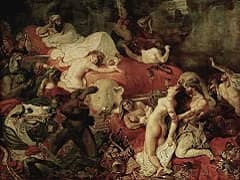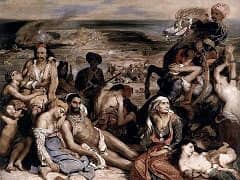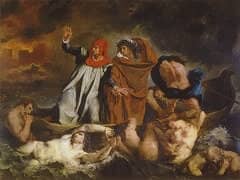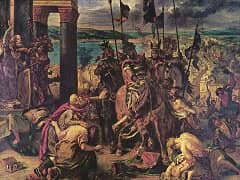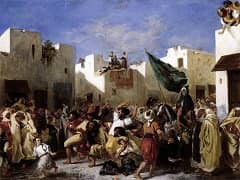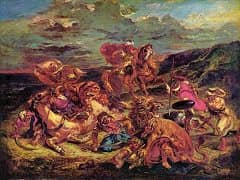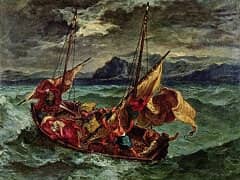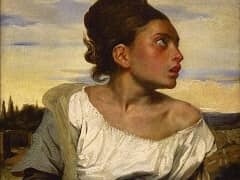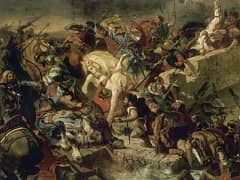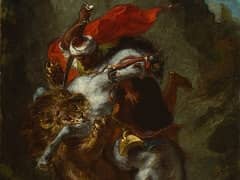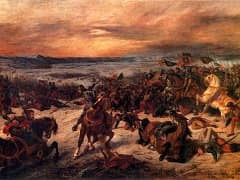St Michael defeats the Devil by Eugene Delacroix

As the acknowledged master of monumental civic decoration, Delacroix could afford to stand aside from one of the major enterprises of his time, the decoration of religious monuments. But the Saints-Anges chapel at the church of Saint-Sulpice provided the opportunity for a kind of last testament. By a decree dated 28 April, 1849, Delacroix was commissioned to decorate a chapel at Saint-Sulpice. However, the urgent demands made by his numerous civic commissions and the doubtful state of his health hindered him fulfilling the decree. Only twelve years later, in 1861, did he complete the chapel. Given that it was consecrated to the Holy Angels, Delacroix chose to represent Saint Michael Defeats the Devil on the ceiling, and Jacob Wrestling with the Angel and Heliodorus Driven from the Temple on the walls. Now badly weakened by illness, he relied heavily on the help of his faithful assistants, Pierre Andrieu and Louis Boulange.
This time there was no critical consensus. There was praise for the delicate gradation of tones in the Heliodorus, which was compared to Raphael and Titian, while Michelangelo was cited in relation to the muscular brutality of Jacob. But contemporary critics were blind to Delacroix's originality in replacing the traditional architectural background with a natural landscape. His very rich and various palette, the harmony of the colours, and, in particular, the subtlety of the greens in the foliage, prefigure the work of Corot. Delacroix here shows himself the father of Impressionism. Jacob Wrestling with the Angel has been read as a summary of Delacroix's life and work. Indeed the leitmotif of his career is the struggle - a spiritual combat - between his aspiration to classicism and his Romantic genius, between his admiration for Racine and his love of Shakespeare.


